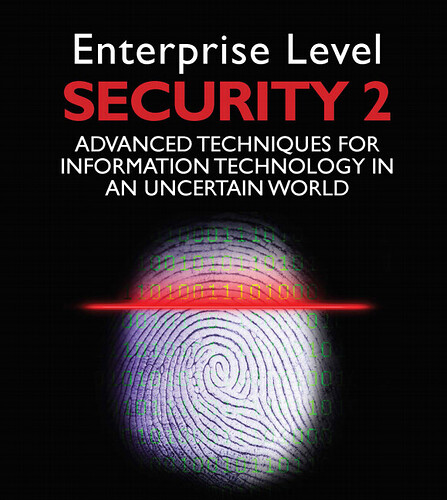This is the second book on enterprise level security. The first book covered the basic concepts of enterprise level security and the discoveries made during the first eight years of its development. This book has been derived from 16 years of research, pilots, and operational trials in putting an enterprise system together. These chapters cover specific advanced techniques derived from painful mistakes and numerous revisions of processes. This book is not meant as a replacement for the first book, but as a supplement.
From a philosophical standpoint, there have been a number of realizations over the years that have shaped the security measures described in this book. They roughly fall into a few basic categories:
Complexity – The time has passed for simple models. Complexity may be measured in active processes, lines of code, McCabe’s fundamentals, or other metrics,
but the complexity of what we cannot control is immense, and there are currently no
formal or informal methods that can even verify a majority percentage of the execution possibilities. This complexity means that we are destined to have unforeseen and
innumerable flaws and exploits in the future. Security principles, on the other hand,
are simple, although the maintenance of security principles may lead to complex
systems. It is often the compromise of these security principles for expediency or
efficiency that leads to vulnerabilities.
Threats – If you are connected, you cannot prevent threats and exploits – you can
only mitigate. Maintaining security principles can go a long way toward identifying
the exploits through forensics, minimizing damages, and speeding recovery.
Operation – The design must operate in the presence of threats. Threats when
discovered will be removed and the systems will be reinstalled and sanitized, but at
any given moment it is assumed that threats are present in the system.
Recovery – The design must be resilient because it will be penetrated and
exploited. When exploits are discovered, the damage must be assessed and repaired,
the system as a whole must be patched, and the exploit must be further mitigated.
After that, one can only wait for the next challenge.
Total Chapters: 24
Happy learning!
